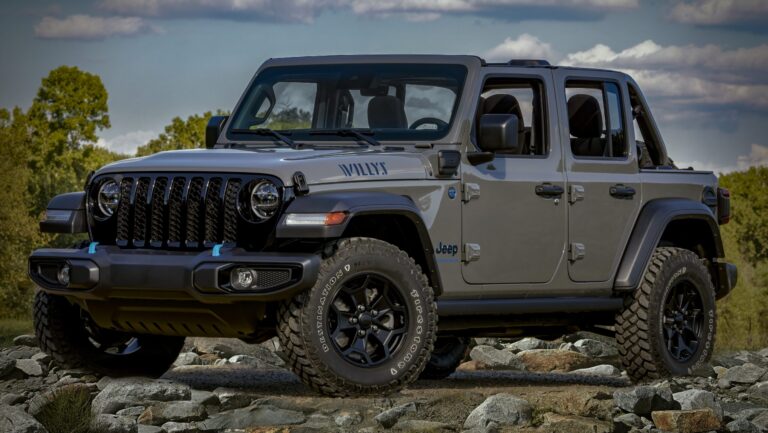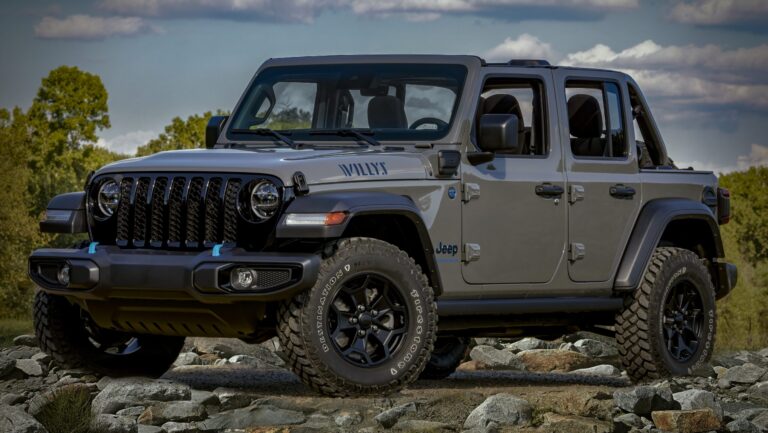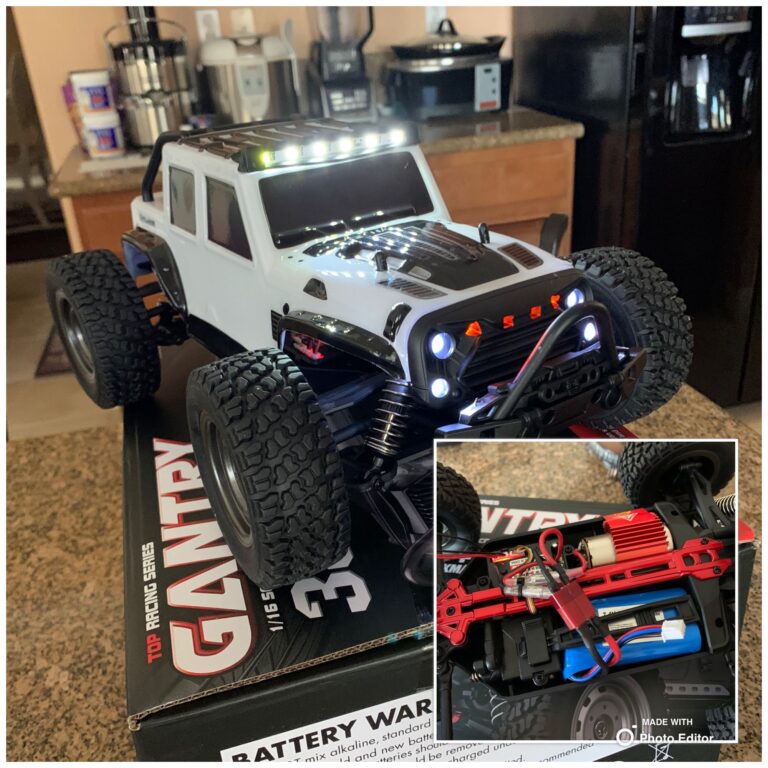Jeep Scrambler Project For Sale: Unleash Your Inner Builder and Revive an Icon
Jeep Scrambler Project For Sale: Unleash Your Inner Builder and Revive an Icon jeeps.truckstrend.com
For many automotive enthusiasts, the idea of a "project car" isn’t just about saving money; it’s about a deep, personal connection to a machine. It’s the thrill of bringing something back from the brink, of pouring sweat and creativity into a metal canvas, and ultimately, of driving a vehicle that is uniquely yours. Among the vast landscape of classic vehicles ripe for restoration, the Jeep Scrambler (CJ-8) stands out as a true icon, and finding a "Jeep Scrambler Project For Sale" often signals the beginning of an extraordinary journey.
The Jeep Scrambler, officially known as the CJ-8, is more than just a vintage 4×4; it’s a legendary piece of American automotive history. Produced for a limited run between 1981 and 1986, the Scrambler was essentially a stretched version of the popular CJ-7, boasting a longer wheelbase and a small pickup-style bed. This unique configuration made it incredibly versatile, appealing to those who needed the ruggedness of a Jeep combined with light hauling capabilities. Today, its rarity and distinctive appearance make it a highly sought-after collector’s item.
Jeep Scrambler Project For Sale: Unleash Your Inner Builder and Revive an Icon
The allure of a Scrambler project for sale lies in its immense potential. Unlike buying a perfectly restored vehicle at a premium, a project offers the chance to acquire this classic at a more accessible price point, allowing the new owner to infuse it with their vision, skill, and passion. Whether your dream is to create a period-correct restoration, a custom off-road beast, or a unique daily driver, a Scrambler project provides the perfect foundation for mechanical exploration, aesthetic creativity, and the satisfaction of building something truly special. It’s an opportunity to not just own a piece of history, but to actively participate in its revival.
Understanding the Jeep Scrambler (CJ-8): A Brief History of a Legend
The Jeep CJ-8 Scrambler emerged from a desire to blend the go-anywhere capability of the CJ series with added utility. Its 103.5-inch wheelbase was significantly longer than the CJ-7’s 93.5 inches, providing more stable on-road manners and, crucially, space for a small cargo bed. Available with various engine options, including AMC’s inline-six and four-cylinder engines, and both manual and automatic transmissions, the Scrambler was designed to be a rugged workhorse as much as a recreational vehicle.
Despite its versatility, sales numbers were relatively low during its production run, making it a rare sight even when new. This scarcity, combined with its distinctive long-bodied profile and robust build, has cemented its status as a highly desirable classic among collectors and off-road enthusiasts. Owning a Scrambler means owning a piece of Jeep heritage that bridges the gap between traditional Jeeps and pickup trucks, offering a unique blend of form and function that continues to captivate.
Why Buy a Scrambler Project? Benefits & Opportunities
The decision to embark on a vehicle restoration project is a significant one, and choosing a Jeep Scrambler project specifically comes with a unique set of advantages:
- Cost Savings: Unfinished projects are almost always more affordable upfront than fully restored Scramblers. This lower entry point allows you to allocate your budget towards quality parts and professional work where needed, often resulting in a superior final product for a comparable or even lower overall investment.
- Unparalleled Customization: This is perhaps the biggest draw. A project vehicle is a blank slate. You can choose every component, from the engine and suspension to the interior and paint color. Want a modern Hemi engine, a custom long-travel suspension, or a bespoke leather interior? A project allows you to build your dream Scrambler exactly to your specifications, creating a one-of-a-kind vehicle.
- Learning Experience & Skill Development: For the mechanically inclined, a restoration project is an invaluable learning opportunity. You’ll gain hands-on experience with automotive systems, welding, fabrication, wiring, and problem-solving. Even if you outsource some tasks, understanding the process deepens your appreciation for the vehicle.
- Potential Investment Appreciation: A well-executed Scrambler restoration, especially one that pays attention to detail and quality, can significantly increase the vehicle’s value. Given their rarity and growing popularity, pristine Scramblers command high prices, making a smart project potentially a sound financial investment.
- Community & Camaraderie: Entering the world of Scrambler restoration connects you with a passionate community of fellow enthusiasts. Online forums, local clubs, and specialized parts suppliers offer a wealth of knowledge, support, and shared experiences that can make the journey even more rewarding.
- The Satisfaction of Creation: There’s an immense sense of pride and accomplishment that comes from taking a neglected, often dilapidated vehicle and transforming it into a beautiful, functional machine. Driving a Scrambler you’ve personally brought back to life is an experience unlike any other.


Key Considerations Before Diving In: What to Look For
While the allure of a Scrambler project is strong, a realistic assessment of its condition and your resources is crucial. Before making a purchase, meticulously inspect the following:
- Rust: The Ultimate Enemy: Scramblers are notorious for rust, especially in the frame, body tubs, floorboards, fenders, and rocker panels. Thoroughly inspect every inch, probing for soft spots. Frame rust is particularly critical as it can be costly and challenging to repair.
- Drivetrain Condition: Does the engine turn over? Does it run? Listen for unusual noises. Check for fluid leaks from the engine, transmission, transfer case, and axles. Even if the drivetrain needs a full rebuild, knowing its current state helps estimate costs.
- Paperwork and Ensure the vehicle has a clean, transferable title with a matching VIN. Verify that the VIN on the title matches the VIN plate on the vehicle. Without proper documentation, registration can be a nightmare.
- Completeness of Parts: Are all major components present? Missing parts like the original hardtop, doors, seats, or specific trim pieces can be incredibly difficult and expensive to source due to their rarity. A complete but disassembled project is often better than a shell with many missing components.
- Previous Work (Good, Bad, or Ugly): Inspect any prior restoration attempts or repairs. Poorly executed bodywork, shoddy wiring, or amateur welding can create more problems than they solve, requiring extensive corrective work.
- Your Budget (Beyond Purchase Price): Factor in not just the purchase price, but also the cost of parts, materials (paint, body filler, consumables), specialized tools, and potentially outsourced labor (e.g., engine machining, professional paint job). Always add a contingency fund (20-30%) for unexpected issues.
- Skill Level & Time Commitment: Be brutally honest about your mechanical skills and the time you can realistically dedicate. A full restoration can take hundreds, if not thousands, of hours. Do you have a suitable workspace (garage, shop) with adequate lighting and power?

Types of Scrambler Projects For Sale: A Spectrum of Challenges
Jeep Scrambler projects come in various states of disrepair and completion, each presenting its own set of challenges and opportunities:
- The "Barn Find" / Bare Shell: These are often the cheapest upfront, sometimes just a frame and a heavily rusted body tub. They require the most extensive work, needing a complete drivetrain, suspension, wiring, interior, and often significant body fabrication. This is for the ultimate enthusiast with deep pockets or exceptional fabrication skills.
- The Rolling Chassis: This typically includes a frame, axles, and sometimes a basic suspension, but no engine, transmission, or body. It’s a solid starting point if the frame is good, but still requires sourcing major components.
- "Running but Rough": The engine starts, and the vehicle moves under its own power, but it’s far from roadworthy. Expect significant mechanical issues, severe rust, worn-out suspension, and a completely dilapidated interior. These can be a good option if the core mechanicals are sound, but don’t underestimate the bodywork.
- The Partially Restored Project: Someone started the work but couldn’t finish. This can be a mixed bag. It might be a fantastic head start with a newly rebuilt engine or a freshly painted frame. Conversely, it could be a project abandoned due to poor workmanship, leaving you to undo and redo previous mistakes. Thorough inspection is paramount for these.
The Restoration Journey: Tips for Success
Once you’ve acquired your Scrambler project, the real work begins. Here are some tips to guide your restoration journey:
- Plan Meticulously: Before turning a wrench, research extensively. Decide on your final vision (restored, restomod, off-road rig). Create a detailed budget and a realistic timeline. Break down the project into manageable phases (e.g., chassis, drivetrain, body, interior, paint).
- Document Everything: Take countless photos before, during, and after disassembly. Label every wire, bolt, and part you remove. Keep detailed notes and receipts for all purchases. This documentation is invaluable for reassembly and for tracking your investment.
- Source Parts Wisely: Utilize a combination of new OEM-style parts, aftermarket upgrades, and quality used components. Online forums, specialized Jeep parts suppliers (e.g., Quadratec, Morris 4×4, Omix-ADA), and salvage yards are your best friends.
- Tackle One Area at a Time: Resist the urge to disassemble the entire vehicle at once. Focus on one system (e.g., front suspension, engine bay, rear axle) until it’s complete. This prevents overwhelming yourself and keeps the project organized.
- Safety First: Always use proper safety equipment (jack stands, eye protection, gloves). Invest in quality tools.
- Don’t Be Afraid to Ask for Help: Leverage online communities, local Jeep clubs, and experienced friends. Don’t hesitate to outsource tasks that are beyond your skill set (e.g., professional welding, engine machining, paintwork).
- Enjoy the Process: Restoration is a marathon, not a sprint. Celebrate small victories, take breaks when frustrated, and remember why you started this journey.
Potential Challenges and Solutions
Restoring a classic vehicle, especially one as unique as a Scrambler, comes with its share of hurdles.
- Challenge: Extensive Rust Repair.
- Solution: For severe frame or body tub rust, consider professional welding or even a frame swap if the original is too far gone. For smaller areas, learn to weld or use patch panels. Rust converters and proper priming are essential to prevent recurrence.
- Challenge: Finding Obscure or Rare Parts.
- Solution: Patience and persistence are key. Regularly check specialized online forums, eBay, and dedicated Scrambler parts suppliers. Network with other enthusiasts who might have spare parts. Sometimes, fabricating a part is the only option.
- Challenge: Budget Overruns.
- Solution: The contingency fund is crucial. Prioritize critical safety and mechanical repairs first. Shop around for parts, compare prices, and consider rebuilding components rather than always buying new. Do as much labor yourself as possible.
- Challenge: Lack of Specific Skills (e.g., Paint, Engine Rebuild).
- Solution: This is where outsourcing comes in. Find reputable local specialists for tasks like engine machining, transmission rebuilds, or professional paint and bodywork. Investing in these areas can significantly enhance the final quality and value.
- Challenge: Loss of Motivation.
- Solution: Break the project into smaller, achievable milestones. Work on something simple and satisfying for a quick win. Revisit photos of your desired outcome. Take a break and return with fresh eyes. Attending a car show or Jeep event can reignite your passion.
Illustrative Price Guide: What to Expect for a Jeep Scrambler Project For Sale
It’s crucial to understand that the price of a Jeep Scrambler project varies wildly based on its condition, completeness, location, and the seller’s urgency. The table below provides illustrative price ranges and common additional costs, emphasizing that these are estimates only and actual costs can differ significantly.
| Condition/Type of Project | Estimated Purchase Price Range (USD) | Common Additional Costs (Beyond Purchase) |
|---|---|---|
| Bare Frame/Shell | $2,000 – $7,000 | Full drivetrain, complete body (tub, fenders, hood), interior, wiring, paint, extensive labor |
| Rolling Chassis | $5,000 – $12,000 | Engine, transmission, transfer case, wiring, full body, interior, paint, significant labor |
| Running but Rough | $10,000 – $25,000 | Extensive bodywork & rust repair, full repaint, interior overhaul, mechanical refresh/rebuilds |
| Partially Restored (Good Start) | $15,000 – $35,000+ | Completion of mechanicals, finishing body/paint, interior details, specific customizations |
| Estimated Restoration Supplies (Average) | Variable, $10,000 – $50,000+ | Parts (new/used), specialized tools, consumables (paint, body filler, fasteners) |
| Estimated Outsourced Labor (Professional) | Variable, $50 – $150+/hour | Professional bodywork, engine/transmission rebuilds, custom fabrication, wiring, paint |
Note: These figures do not include potential costs for major upgrades (e.g., engine swap, custom suspension, high-end interior) which can easily add tens of thousands of dollars. Always assume your project will cost more and take longer than initially estimated.
Conclusion: Your Scrambler Dream Awaits
The journey of restoring a Jeep Scrambler project is not for the faint of heart, but for those with the passion, patience, and perseverance, it is an incredibly rewarding endeavor. It’s an opportunity to save a piece of automotive history, to hone your mechanical skills, and to ultimately drive a truly unique vehicle that embodies your vision. From the initial search for that perfect "Jeep Scrambler Project For Sale" to the triumphant first drive of your completed masterpiece, every step of the process is an adventure.
By thoroughly researching, planning meticulously, and embracing the challenges, you can transform a rusty shell into a show-stopping legend. So, if the idea of getting your hands dirty and breathing new life into an iconic 4×4 excites you, then perhaps your very own Scrambler project is out there, waiting to be discovered.
Frequently Asked Questions (FAQ) About Jeep Scrambler Projects
Q1: Is a Scrambler project a good first restoration project?
A1: While simpler than some complex classics, a full Scrambler restoration (especially one with significant rust) can be challenging for a complete novice. It’s manageable if you’re willing to learn, have a good support network (forums, friends), and are prepared to outsource specialized tasks. Starting with a "running but rough" model might be less daunting than a bare shell.
Q2: How much does a full restoration typically cost?
A2: Excluding the purchase price, a full, high-quality restoration can range from $20,000 to $60,000+ for parts, materials, and potentially outsourced labor. This varies greatly based on the initial condition, the desired level of finish (driver quality vs. show quality), and how much work you do yourself.
Q3: Where are the best places to find parts for a Scrambler?
A3: Dedicated online Jeep parts retailers (e.g., Quadratec, Morris 4×4, Omix-ADA), specialized Scrambler/CJ forums and Facebook groups, eBay, local salvage yards, and even general classic car swap meets can yield parts. Networking with other Scrambler owners is also invaluable.
Q4: Are Scramblers good daily drivers after restoration?
A4: A properly restored Scrambler can certainly be a reliable daily driver, especially if you incorporate modern upgrades like fuel injection, power steering, and better brakes. However, they are still vintage vehicles, and modern comforts and safety features will be limited compared to contemporary vehicles.
Q5: What’s the main difference between a CJ-7 and a CJ-8 Scrambler?
A5: The primary difference is the wheelbase and rear body design. The CJ-8 Scrambler has a 103.5-inch wheelbase (vs. 93.5 inches for the CJ-7) and features a small pickup-style bed, making it longer and more versatile for hauling light loads.
Q6: How long does a Scrambler restoration usually take?
A6: This varies wildly based on the project’s initial condition, your available time, skill level, and budget. A comprehensive, high-quality restoration can take anywhere from 1 to 5 years (or even longer) of consistent work. Part-time efforts will naturally extend the timeline.






